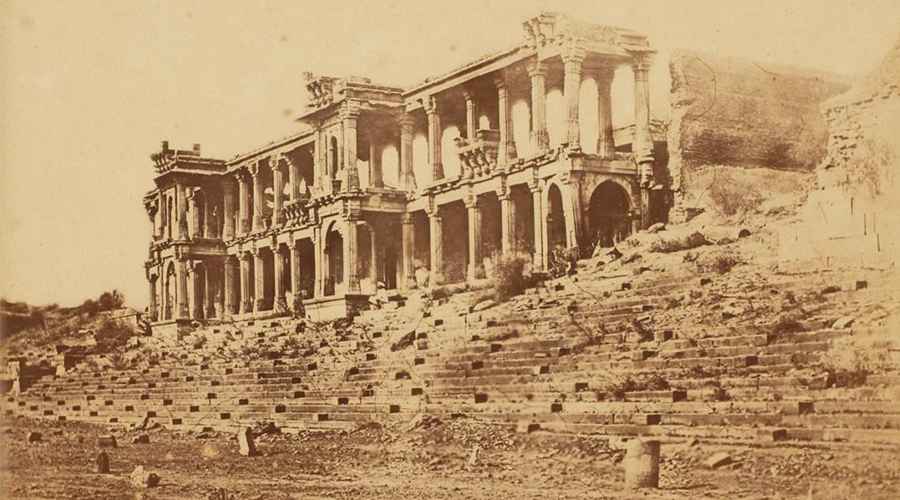The history of medieval India is dotted with regional kingdoms and sultanates that played vital roles in shaping its political, cultural, and economic trajectory. Among them, the Gujarat Sultanate, founded in the early 15th century, holds special significance. Renowned for its flourishing ports, architectural marvels, and resilient rulers, the Sultanate emerged as a prosperous and influential power in western India. It not only controlled a wealthy region but also became a crucial link in global maritime trade at a time when India was deeply connected with the Middle East, Africa, and Southeast Asia.
Origins of the Gujarat Sultanate
The Gujarat Sultanate formally came into existence in 1407 under the leadership of Zafar Khan, who later assumed the title Muzaffar Shah I. He had originally served as a governor under the Delhi Sultanate during the weakening reign of the Tughluqs. With the decline of Delhi’s central authority in the late 14th and early 15th centuries, regional governors seized opportunities to establish independent rule. Gujarat, due to its wealth and strategic coastal position, was one of the first regions to carve out such independence.
Muzaffar Shah I established the foundation of a strong kingdom that would last for nearly two centuries, surviving repeated challenges from the Delhi Sultanate as well as the rising power of neighboring Rajput states. His successors consolidated power, expanded territory, and laid the economic and cultural foundations for a flourishing Sultanate.
Geographical Advantage and Economic Wealth
The Gujarat Sultanate’s wealth was deeply connected to geography. Situated along India’s western coastline, it controlled vital ports such as Cambay (Khambhat), Surat, and later Bharuch. These centers were magnets for traders from across the Indian Ocean world, including Arabs, Persians, Turks, and even the newly arriving Portuguese.
Cotton textiles, indigo, and spices were exported in exchange for horses, precious metals, and luxury goods from Europe and the Middle East. The sultans adeptly encouraged commerce, fostering a mercantile culture that enriched not only the state coffers but also the wider population engaged in trade, weaving, and shipping.
Additionally, Gujarat’s fertile hinterland produced food grains and raw materials, ensuring the kingdom had both agricultural and commercial prosperity. This diversification insulated the Sultanate from the economic decline that afflicted many other inland kingdoms of medieval India.
Political and Military Strength
The Gujarat Sultanate successfully balanced diplomacy and military exertion to preserve its independence. The rulers frequently faced pressure from the Rajput polities of Rajasthan, the rising Malwa Sultanate, and later the powerful Mughals. Yet, Gujarat maintained its sovereignty for most of its two-century existence through clever maneuvering.
One of its most formidable rulers was Mahmud Begada (r. 1459–1511). He is remembered for his long and vigorous reign, marked by expansion and consolidation. He captured Girnar in Kathiawar and fortified the coastal region against pirate incursions. Mahmud Begada also laid the foundation for Ahmedabad, which emerged as a bustling capital symbolizing the Sultanate’s rise.
The military of the Gujarat Sultanate was well-resourced due to the state’s wealth. Naval capabilities were particularly significant because control of the coastline and ports was essential for economic and political strength. However, this maritime focus brought the Sultanate into conflict with the Portuguese when they arrived in the Indian Ocean in the early 16th century.
Cultural Flourishing and Architecture
The Gujarat Sultanate was not only a political and trading power but also a center of cultural synthesis. The rulers patronized literature, learning, and architecture, leaving behind monuments that still stand today.
Architectural contributions are among the most celebrated legacies of the Sultanate. The sultans blended Islamic styles with local traditions, creating distinguished examples of Indo-Islamic art. The mosques of Ahmedabad, such as the Jama Masjid and Sidi Saiyyed Mosque, are famous for their intricate latticework, which still captivates visitors. Tombs, palaces, and stepwells built during this period reveal a unique aesthetic that combined Persian influences with indigenous craftsmanship.
Culturally, Gujarat during this era was cosmopolitan. Merchants, scholars, travelers, and artisans from different communities – Hindus, Muslims, and Jains – contributed to its vibrant society. The Sultanate encouraged Sufi traditions, which facilitated religious harmony and helped establish Gujarat as a spiritual and intellectual hub.
Challenges from Foreign Powers
The rise of European powers in the Indian Ocean proved to be both an economic challenge and a turning point for the Gujarat Sultanate. The Portuguese, after arriving in India at the turn of the 16th century, sought to dominate maritime trade routes. This led to clashes with the Gujarat navy, most famously during the Battle of Diu in 1509.
The Portuguese victory forced the Sultanate to contend with reduced influence over maritime trade, but Gujarat still remained a significant power for decades. However, the constant struggle against Portuguese expansion drained resources, making the state vulnerable to northern threats.
Eventually, in the mid-16th century, the powerful Mughal emperor Akbar annexed Gujarat in 1573. By this time, the Sultanate had been weakened by internal divisions and external pressures, making it difficult to resist the might of the Mughals.
Legacy of the Gujarat Sultanate
Though absorbed into the Mughal Empire, the Gujarat Sultanate left behind an enduring legacy. Its emphasis on maritime trade placed Gujarat at the center of global commercial routes, a position later sustained through the Mughal period and even into colonial times. Culturally, the architectural monuments of the Sultanate stand as testaments to its artistic achievements, blending Persian and Indian influences into one of the most distinctive regional styles in India.
Moreover, the Gujarat Sultanate demonstrated how regional powers could thrive even in times when larger empires were disintegrating. By leveraging geography, fostering trade, and skillfully managing alliances, it carved out a prosperous existence that significantly influenced the trajectory of Gujarat’s history.
Conclusion
The Gujarat Sultanate represents one of the most successful experiments in regional state-building in medieval India. Rising from the waning authority of the Delhi Sultanate, it forged prosperity through trade, defended itself with vigor, and cultivated a flourishing cultural landscape. Its maritime orientation distinguished it from many other contemporary Indian states and gave it a cosmopolitan character. While eventually succumbing to the Portuguese challenge and Mughal expansion, the Gujarat Sultanate remains a fascinating chapter in Indian history—one that underscores the interplay of commerce, culture, and politics in shaping a kingdom’s destiny.



